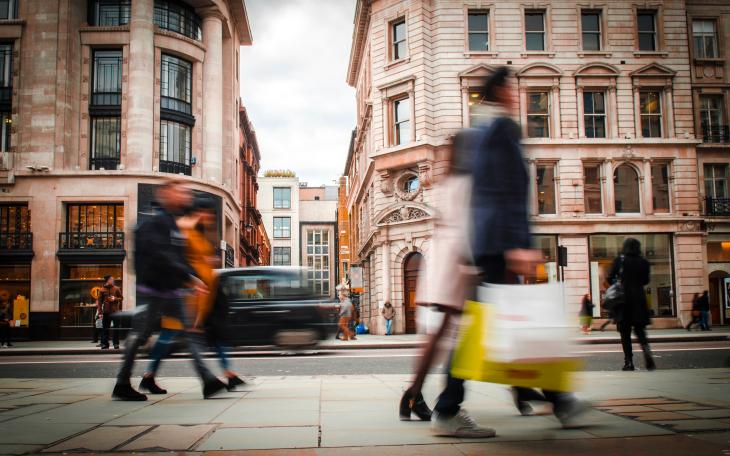Retail reopens – but with an uncertain future

By Henry Columbine, Managing Partner, Property
As a nation, there’s little we love more than queuing and little we love less than having our personal space invaded.
So the fact that non-essential shops opened again today with the added bonus of having to queue to get into them and strict measures in place to prevent other people getting too close should be a welcome move.
Of course, retail’s reopening is not just good news for those desperate to buy some non-essential tat; it’s also the first step in rebuilding the economy and signals the start of a gradual return to some kind of normality for consumers, national chains, independent shopkeepers and retail landlords alike.
Three months of closure will undoubtedly have made a significant impact on an already struggling sector. The economy shrank by a fifth in April; the pandemic has compounded issues for intu, which last week reportedly put KPMG on standby to act as administrator; and, according to statistics reported by The Daily Telegraph, retail landlords collected just 41% of rents due in March, with mixed expectations for the next quarter day later this month. As the queues predictably formed outside the likes of Primark and Foot Locker this morning, many retailers and their landlords will be hoping that pent-up demand can make up for at least some of the misery of the last 12 weeks.
The property sector has been guilty of tarring all retail with the same brush, but the truth is that some will fare much better than others with the challenges of adapting to operating while a pandemic is still affecting our attitudes, priorities and daily routines.
City-centre high streets and traditional city-centre malls look likely to have the roughest ride. With most people still wary of using public transport and many city-centre office workers still working from home, footfall from all but the most determined of shoppers is likely to remain depressed. Units in these locations tend to be smaller and secondary malls generally have limited communal space, making implementing social distancing measures more difficult.
For out-of-town retail parks, the outlook is more positive. Easily accessible by car, with larger units and more open-air space between them, consumers are likely to see a trip to a shopping park as a safer experience. The fact that retail parks also offer a hub for click and collect and drive-through takeaway food also adds to their appeal.
Speaking to the BBC, retail expert Mary Portas also highlighted that this is a huge opportunity for shops on local high streets. She makes the point that the pandemic has encouraged us all to be more community minded and locally focused. Many small, independent retailers have taken a creative and entrepreneurial approach to trading during lockdown. From cafés and restaurants finding ways to make takeaway and delivery options work, to boutiques launching online, the pandemic has made smaller retailers up their game and made local communities keener to support them. That is likely to last well into the future.
In many ways, Covid-19 has accelerated trends that were already underway: remote working, online shopping and a renewed local focus to name just a few. And while three months with the shutters down will have done little to help the already-ailing retail market, the prognosis remains much the same: for those who fail to evolve, fail to recognise the importance of a multi-channel strategy and continue to focus on transactions rather than experiences, the future looks perhaps bleaker than ever. But those who can offer something unique, something experiential, and something that can’t be purchased more cheaply and easily online will continue to do well, and those that see physical retail as an asset to be maximised for the benefit of their brand, and as an opportunity to interact with consumers regardless of where and how they ultimately make a purchase will create a loyal customer base. Even after lockdown, retail is not dead – but it’s changing faster than ever.









